Talk about a tease! Florence Bucciacchio, my host from the Dijon Tourism Office began my gastronomic tourism exploration of Dijon, France, with a visit to the Les Halles Market, but she wouldn’t let me buy anything. “I’ve booked lunch for us at one of two Michelin Star restaurants in our city, and I don’t want you to ruin your appetite!” It was almost painful to walk through aisles heaped with specialty cheeses, fresh baked breads, homemade pastries, and artisan chocolates without being able to sample the wares. Finally, seeing that I was salivating like one of Pavlov’s dogs, she relented.

At the Le Gourmet Dijon kiosk, she introduced me to owner Gaëlle Herbert. “This is one of my favorite shops in the market. Gaëlle and her husband Laurent have been caterers and pastry chefs in Burgundy for more than 30 years. She makes everything you see here from scratch, using only local products.” Gaëlle carved a off a sliver of quiche layered with broccoli, cheese, and carrots for me to try. “Delicious,” I raved. She would have gladly kept feeding me if Florence hadn’t dragged me off to Loiseau des Ducs for my first immersion into Dijon cuisine.
Loiseau des Ducs is located at the head of Vauban Street, near Dijon’s historic Place de la Liberation. Owner Dominique Loiseau opened the restaurant in 2013. In February, 2014, under the guidance of Chef de Cuisine Louis-Philippe Vigilant, the restaurant received its first Michelin Star. The lunch, dinner, and tasting menus at Loiseau des Ducs range from €29 to €122 ($35 to $145) per person. Our five-course lunch began with a green Zebra tomato gazpacho topped with a dollop of green apple sorbet and drizzled with basil oil. It was love at first bite! The piquant green tomatoes were perfectly complimented by the sweet-sour green apple sorbet. The surprise came when I swallowed; a slightly spicy heat burst at the back of my throat. It was like nothing I had ever tasted before and, I suspect, never will again.
Next up was the starter: three types of fresh melon and a cup of honeydew melon gazpacho, garnished with a dollop of mint.
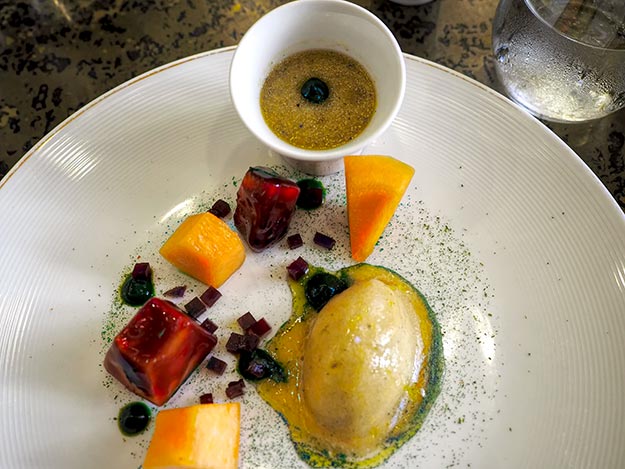
My vegetarian main course, a vegetable medley of zucchini spaghetti with lavender honey, was also delicious, as was Florence’s, which included a perfectly done Salmon cake.
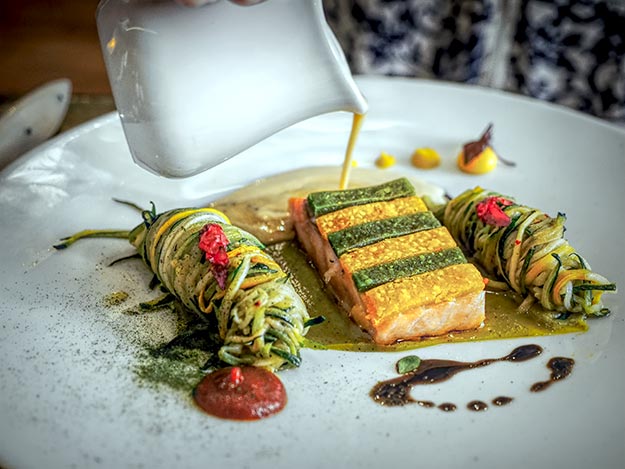
I would have been happy to call it a meal at that point, but the chef had other ideas. Not one, but two desserts followed. First, Panna Cotta with apricot compote and thyme infusion, topped with apricot sorbet. Then coffee and gourmandise of marshmallow spirals with almond cream and black currant Madelaines.
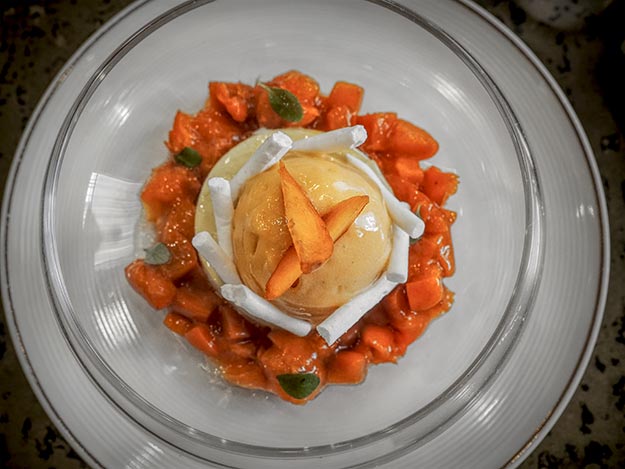
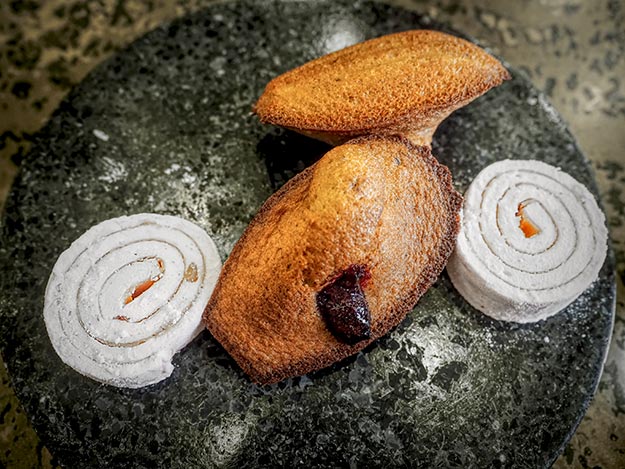
Two and a half hours later we waddled out and boarded a local bus to Mulot & Petitjean gingerbread makers. My previous knowledge of gingerbread had been limited to the cookies my mother made each Christmas. She spiced a dough with ginger, cinnamon, cloves, and molasses, rolled it flat, then used a cookie-cutter to carve out chubby brown figures with splayed arms and legs. Hands, feet, and mouth were drawn on with icing, Red-Hot candies became eyes, and colored sprinkles served as buttons. Voila! An army of gingerbread men waited for us to mercilessly bite off their arms, legs, heads.
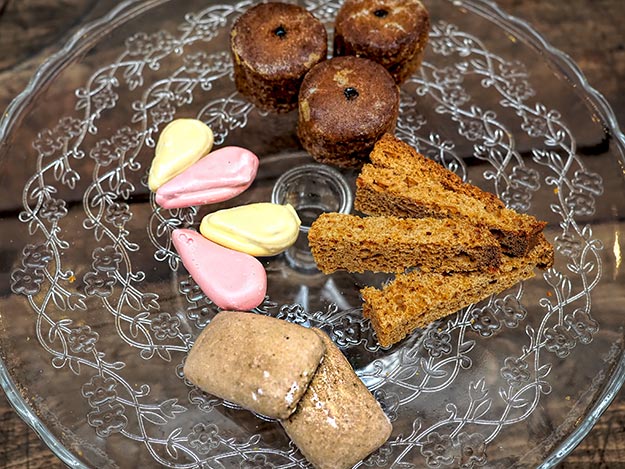
Mulot & Petitjean, which began in 1796, has been transferred from son to daughter for nine generations. Today it is owned and operated by Catherine Petitjean, who still preciously guards the firm’s secret recipes for gingerbread, one of the mainstays of gastronomic tourism in Dijon. I quickly learned that my idea of gingerbread bears no resemblance to the real thing. For one thing, true gingerbread does not contain ginger. Only Farine de Froment (a type of wheat flour specific to Dijon), multi-floral honey, sugar, and anise may be used, and it can contain no more than three percent fat. Thus, unlike the thin, hard gingerbread men of my youth, this French delicacy known as Pain d’Epices (literally “spice bread”), is puffy and soft.
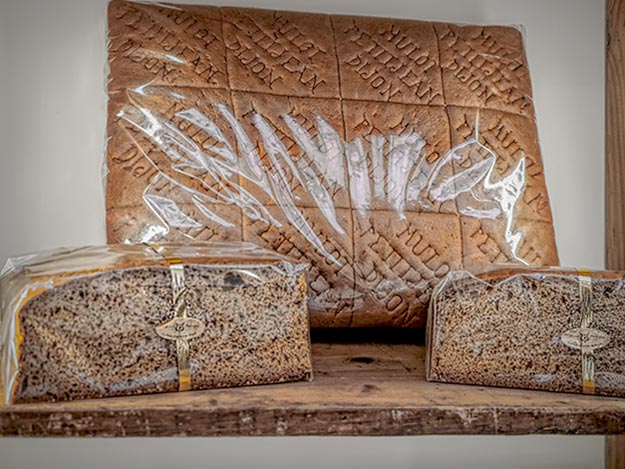
Interestingly, after all these centuries, the Pettijean family still does not know exactly what happens scientifically to the dough after the ingredients are mixed. They only know that the longer it ages, the better it tastes. After mixing, the dough is allowed to rest for three weeks. When ready, it is baked for two hours at a low temperature, allowing the dough to rise into a soft, puffy cake. Some of the gingerbread is filled with apricot, orange, raspberry, or black currant jam, or with chocolate, toffee, or lemon curd filling, then dusted with powdered sugar. Known as Nonnettes, these filled varieties were my absolute favorites. Of course, they sent me away with a bag full of Nonnettes. I skipped dinner and noshed on gingerbread instead.
The following morning I hopped out of bed with great excitement, as Florence had arranged for me to tour Fallot Moutarderie, where the famous Dijon Mustard is produced. Truth be told, I had originally been obsessed with the idea of visiting Dijon for the sole purpose of learning how the famous mustard was produced. In my mind it is the quintessential product of French gastronomy. Florence replied to my inquiry enthusiastically. “You would like to discover everything about mustard and why not!” She suggested their “gourmand and piquant program,” which promised to introduce me not only to Dijon mustard, but also to other area’s other specialties. Learning that I had recently immersed in the making of France’s famous Comté cheese, she threw out a challenge. “Here you will discover new cheeses like Epoisses, Chaource, or Soumaintrain.” I was hooked. I simply cannot resist a good cheese tasting, and though I know my French friends will shudder with horror, for me there is no better pairing than cheese slathered with Dijon mustard.
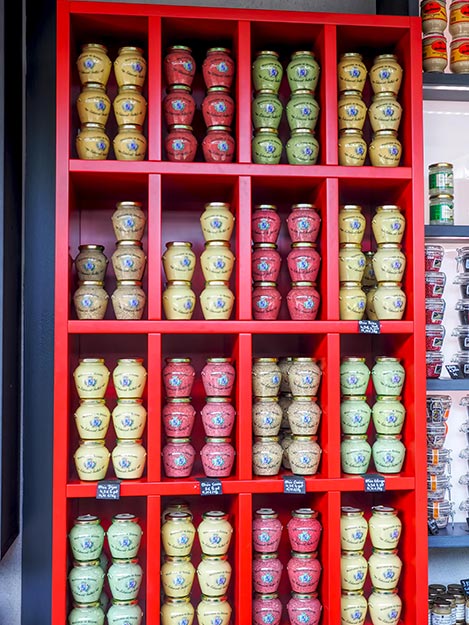
At Fallot Moutarderie, I learned that mustard has been around in one form or another for thousands of years. The ancient Chinese, Greeks, and Romans all knew how to transform mustard seeds into a smooth, aromatic paste, but the condiment we know today didn’t appear until the Romans brought it to Gaul. They planted mustard among the vineyards and began mixing the unfermented juice of the grapes (the “must”) with ground mustard seeds to reduce the “heat” of the ground paste. By the 10th century, mustard was being produced by monks in France, and by the 13th century Dijon had emerged as an important center for the production of mustard. During the 18th and early 19th centuries, dozens of manufacturers in the region were competing to create the best recipes, but a grape disease at the end of the 19th century spelled doom for the industry.

Today, craftsman mustard manufacturers are rare, but one of the few that still use traditional stone milling methods, Fallot Moutarderie, is located just south of Dijon. I hopped on the train for the 30-minute ride to the village of Beaune, where a pleasant stroll through ancient stone-paved streets brought me to their factory. In their museum, I tried my hand at grinding mustard seeds and adding vinegar to make my own mustard, but the best part was their retail store, which offered a mind-boggling array of mustard. Fallot produces more than 60 varieties, including Bourgogne (Burgundy), gingerbread, tarragon, black currant, basil, walnut, honey and balsamic, and black peppercorn. I tried them all, but my favorite was still their traditional Moutarde de Dijon.
With my taste for mustard sated, it was time to turn my attention to the cheeses of the Burgundy region. Florence treated me to a tour of Gaugry Frommagerie, a family owned cheese-maker since 1946. Gaugry specializes in the production of washed rind soft cheeses such as Epoisses, Langres, Cendré de Vergy, Plaisir au Chablis, Petit Gaugry, and Soumentrain. Because these “soft” cheeses are neither heated or pressed, they have a creamy and smooth consistency, and may even be runny when completely mature. The “washed rind” refers to cheeses that are washed with salt water and brushed in order to develop a mature rind. In some cases, alcohol or wine is added to the brine; Epoisses, for example, is matured with Marc de Bourgogne. And while each has its own distinct flavor, all are extremely strong – some might even say stinky – cheeses. At the end of our tour, I mustered up my courage and sampled several. Once I got past the strong smell, I found I quite liked the flavor.
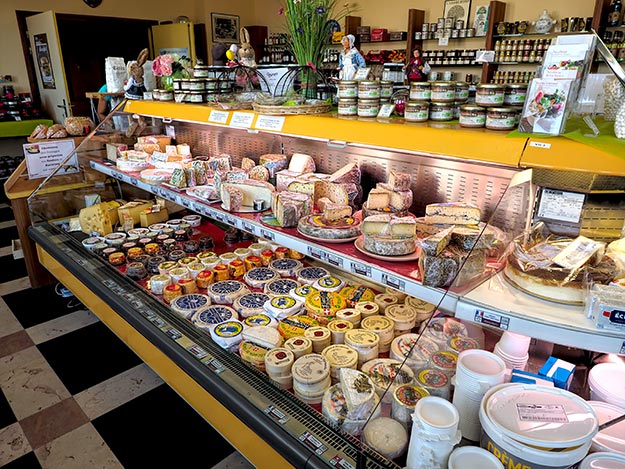
It was time for Florence and I to part, but I wasn’t yet done with Dijon. I extended my stay for an additional two days and began exploring on my own. On the “Owl’s Trail” I learned about the history and architecture of Dijon. Named for an ancient image of an owl that was carved into the facade of the Parish of Notre-Dame, brass arrows with the silhouette of an owl have been embedded into the pavement, making this self-guided walking tour easy to follow. I sat for hours in squares, watching French life pass by, and nosed around the city’s many art galleries. I even enjoyed a female quartet that performed at a sidewalk cafe as part of Dijon’s summer concert series.
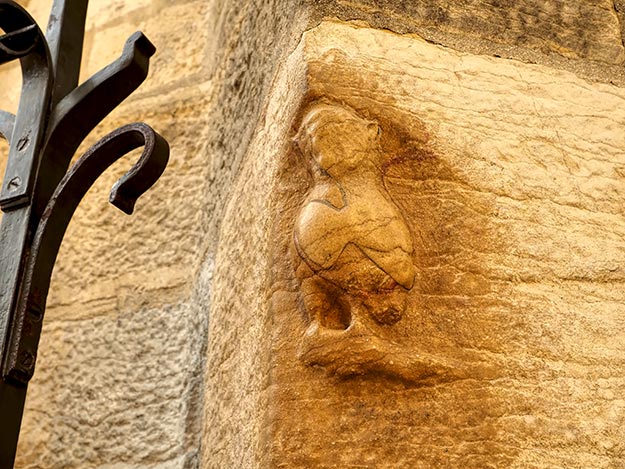
But the cuisine of Dijon was the shining star, and I couldn’t leave without dining at William Frachot, a two-star Michelin restaurant. It couldn’t have been more convenient; the restaurant is located in the delightful four-star Chapeau Rouge Hotel where I had been staying.
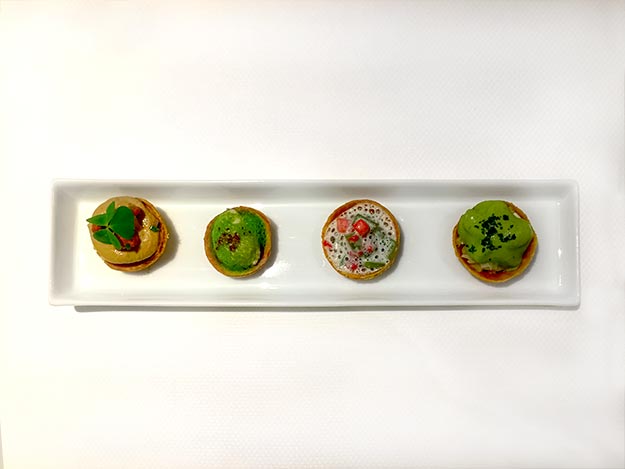
Having been forewarned that I was a vegetarian, Chef Frachot had prepared a special tasting menu for me. The aperitif featured four flaky bite-size canapés with intriguing fillings that married mushroom cream with peas, parsley with poached quail egg, green beans with almonds, and white asparagus with pomelo.
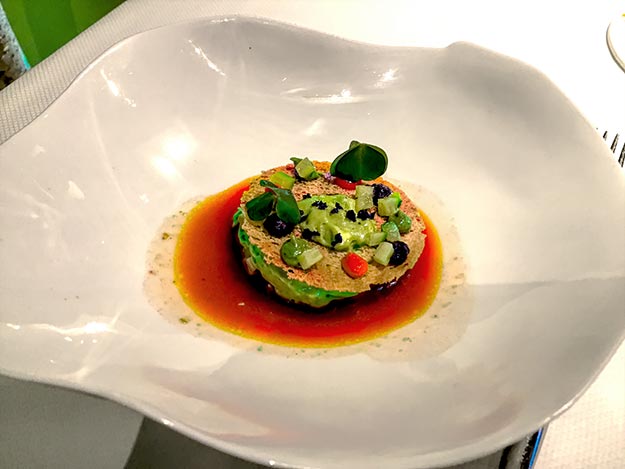
The first starter was a perfect pairing of creamy zucchini mousse doused with a tangy but sweet red pepper sauce. A second starter featured a green garlic-basil sauce drizzled over fresh tomatoes from the south of France, topped with a dabs of Balsamic vinegar. The peeled tomatoes melted in my mouth.
My main dish, an organic vegetable platter with potato gnocchi, combined roasted onions, grilled white asparagus, rolled-up cucumber slices, lettuce, tiny mushrooms, green beans, and red currants. The light-as-air gnocchi was a real stand-out.
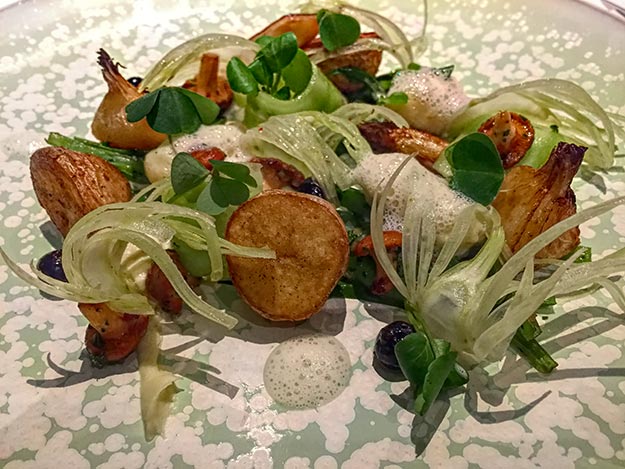
Full to my eyebrows, I had to force myself to finish a Gingerbread Nonnette with orange marmalade sauce, along with three bite-size desserts: a pear tart with red wine jelly glaze; a black currant cream filled Canelé with chocolate wafer on top; and chocolate cake with dome of chocolate cream, garnished with mustard grains.
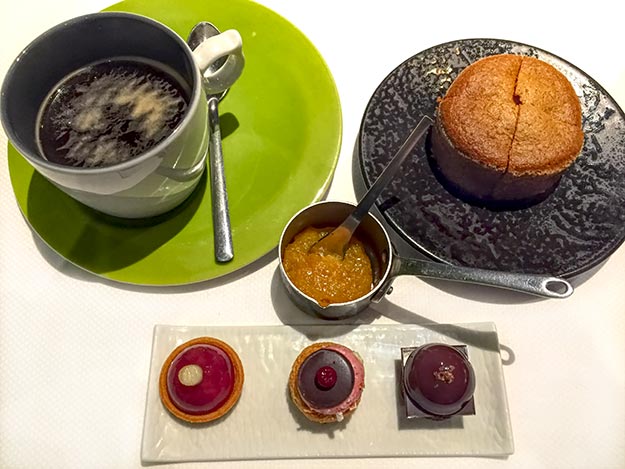
There is no doubt why William Frachot Restaurant has earned two Michelin Stars. The cuisine was exiting and delicious, the presentation magnificent, and the service was impeccable without being ostentatious. I was shocked by the price of €90 (about $107); I had expected it to be much higher.
In 2010, UNESCO declared French cuisine to be a ‘world intangible heritage.’ Following UNESCO’s lead, the French government designated Tours, Lyon, Paris-Rungis, and Dijon as the four French cities of gastronomy where visitors can best experience this unique heritage. To capitalize on its new status, Dijon is remodeling an old hospital into a dedicated center for gastronomy. When complete in 2019, it will include a four-star hotel, cinema, and facilities for cooking and wine classes, but there’s no need to wait. With restaurants like William Frachot and Loiseau des Ducs, the Les Halles Market, and an unparalleled wine region to boot, Dijon already offers more than enough to make you fall in love at first bite as well.
Author’s note: I didn’t plan a summer of travel that revolved around food. It just sort of happened. If you like this story about the French gastronomy in Dijon, France, you may also enjoy my story about Bologna, Italy, where the precise specifications for tagliatelle pasta were developed. At the Montestigliano Agritourismo Farm in Tuscany, the Donati family spoiled me with gourmet food morning, noon, and night; while at Palazzo Donati in the little known Italian region of Le Marche, I learned how to make passatelli, attended a vegan workshop, and went truffle hunting with a local restaurateur and his very talented truffle-hunting dog.
Disclosure: I was a guest of Dijon Tourism during gastronomic tourism experience in Dijon, France, however, the receipt and acceptance of complimentary items or services will never influence the content, topics, or posts in this blog. I write the truth, the whole truth, and nothing but the truth. This article contains affiliate links to hotel booking sites. If you click on any of the links and make a booking, I may earn a small commission, which keeps this blog free to read.
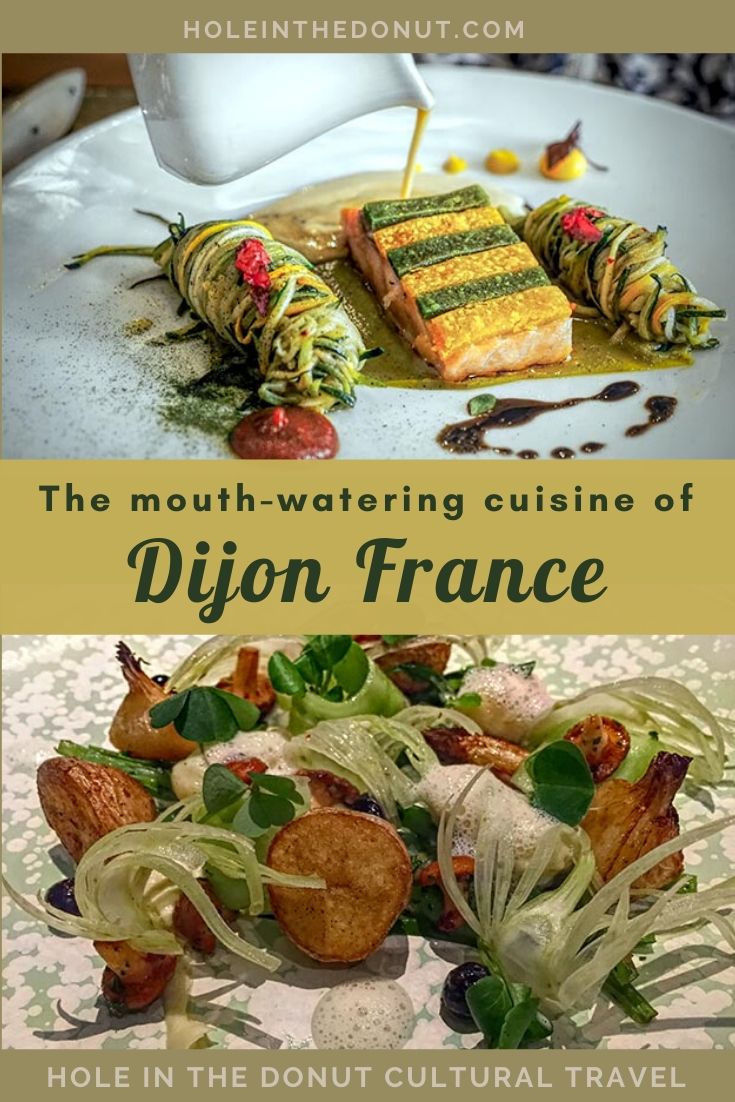
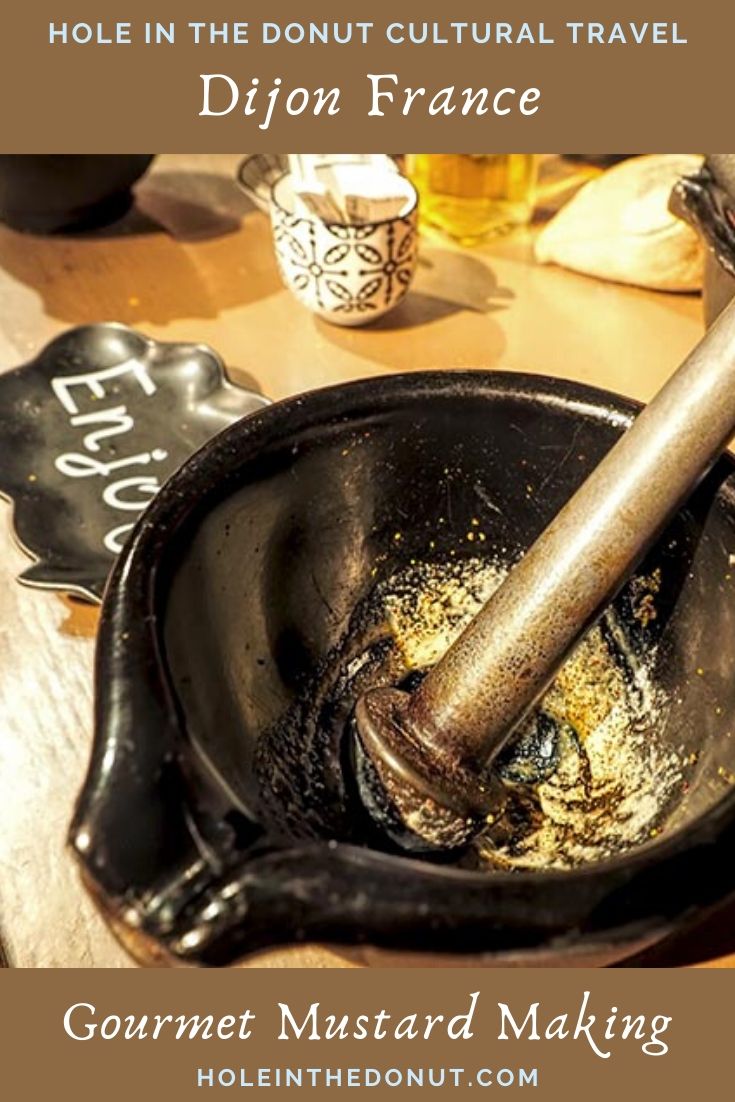

Very useful post, really thank you so much for providing such information. I am really glad to see this article.
I am so happy that you showcase my city of birth, my beloved Dijon. Beautiful articles. Thanks Barbara !
OMG I am starving now! Thank you for this useful post. I am going to Dijon this fall and was hesitant to try a Michelin star restaurant because I thought they would be way overpriced but I may just pay William Fraction a visit. And I am most certainly going to Beaune.
Hi Cindy: Thanks so much for our comment. I’m sure you’ll enjoy Dijon. It’s among my favorite three destinations in France. And you just can’t beat the food!
I love your descriptions and details and could almost feel I was there with you. Unfortunately, I was/am not. You’re having such a good time!
Hi Paula! Haven’t heard from you in a while. Where are you these days? Thanks so much for the compliment. I am indeed having a great time. Many interesting destinations this year, and Dijon to be one of my favorites. Thinking of spending a month there next summer. Sending lots of love.
Amazing food!! You have a knack of making the reader feel like they’re travelling along with you, Barbara! I’m full after reading this…lol.
Gosh Crystal -you know that’s really the highest compliment you can give to a writer. Thank you so much.